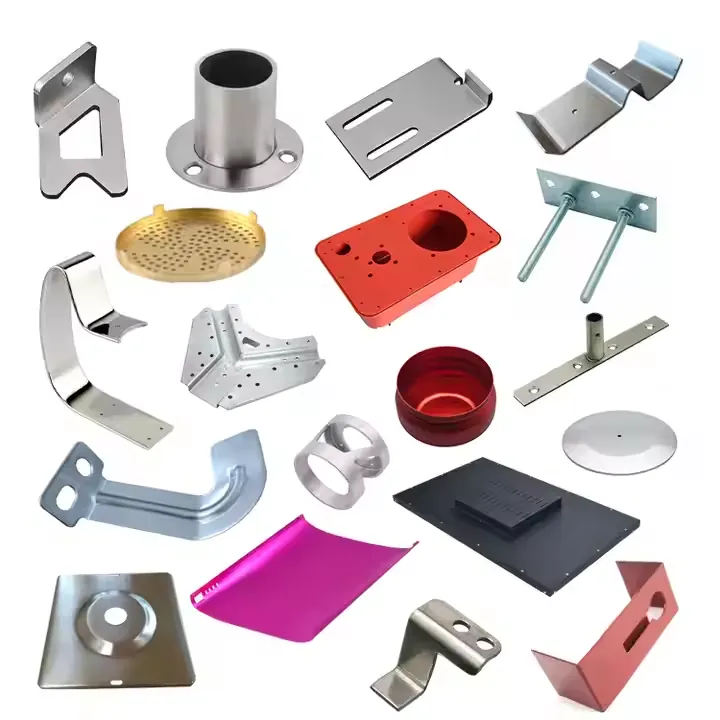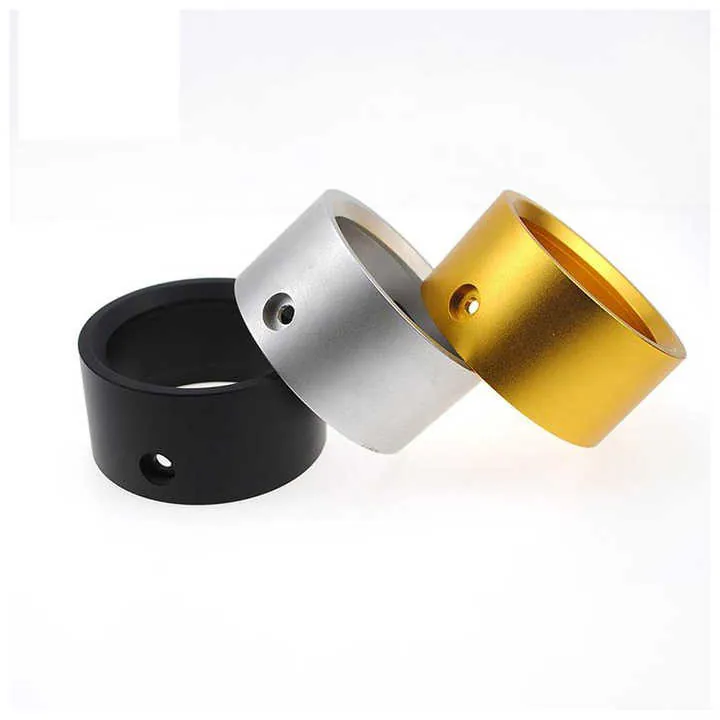What is CNC machined aluminum parts?

I know it is hard to find a clear guide on CNC machined aluminum parts. You need simple explanations of process, benefits, accuracy, and use cases.
You will learn what CNC machining is, how parts are made, why it is superior, and where it is used.
Let me walk you from basic idea to finished components.
How are CNC machined aluminum parts produced?
I start by creating 3D CAD models. Then I convert them to machinable code. Finally, I use CNC mills or lathes to shape raw aluminum blocks or billets.
CNC aluminum parts are made by CAD design, CAM programming, and precise milling or turning on aluminum stock.

Dive deeper
When I begin production, I first design the part in CAD software such as SolidWorks or Fusion 360. The model includes all dimensions, features, hole patterns, and tolerances. I also define surface finishes and material grade.
Next, I import the CAD file into CAM software. CAM helps me create tool paths for CNC machines. I select tools: end mills, drills, chamfer mills, taps. I define cutting speeds, feed rates, and depth per cut. I also plan fixturing so the raw material is held accurately during machining.
The raw material is usually aluminum billet or bar stock. Common alloys are 6061-T6 (good strength and machinability) and 7075-T6 (higher strength, more wear-resistant). The stock is secured in a vice or fixture on the CNC table.
The CNC machine, such as a 3-axis or 5-axis mill, follows the tool paths to remove material. It cuts cavities, slots, chamfers, and threads. The machine may stop for tool changes or threading operations.
After machining, I deburr sharp edges using brushes, files, or tumblers. I inspect the part for dimensional accuracy using calipers, CMM (coordinate measuring machine), or gages. I check all holes, surfaces, and threads against the drawing.
If surface finish is required, I may anodize the part, apply powder coat, or polish. Then I package or assemble the part as needed.
Here is a process summary:
| Step | Purpose |
|---|---|
| CAD modeling | Define geometry and tolerances |
| CAM programming | Generate tool paths and setup machining details |
| Material selection | Choose aluminum alloy and stock shape |
| CNC machining | Mill or turn features per design |
| Deburring & cleaning | Remove sharp edges and clean the part |
| Inspection | Verify accuracy with gages or CMM |
| Finishing & packing | Apply surface treatment and prepare for delivery |
| Machine Type | Best use case |
|---|---|
| 3-axis CNC mill | Simple profiles and prismatic parts |
| 5-axis CNC mill | Complex geometries, undercuts, angled features |
| CNC lathe | Cylindrical parts like shafts and bushings |
| Mill-turn center | Combined milling and turning in one setup |
With this method, I can create complex parts, tight tolerances, and high repeatability all within a few days.
CNC machining requires manual shaping by hand.False
CNC uses automated tool paths controlled by code, not manual shaping.
CAM programming translates CAD models into machining steps.True
CAM software converts CAD designs into tool paths and machine instructions.
What benefits do CNC aluminum parts offer over other methods?
I compare CNC to casting, extrusion, 3D printing, and stamping. I highlight precision, strength, speed, and surface quality.
CNC machined aluminum parts offer high precision, strong material properties, fast turnaround, and excellent surface finish.

Dive deeper
CNC machining stands out for accuracy. I can machine features to ±0.01?mm or better. That precision beats casting or extrusion, which rely on die tolerances of ±0.1?mm or more. For complex pockets or angled holes, CNC remains the best method.
Also, CNC uses solid alloy stock. There are no voids or internal porosity common in castings. This ensures full material strength at all features.
In terms of finish, CNC parts have smooth surfaces and sharp edges. Sanding or polishing is easier or sometimes unnecessary. Casting or stamped parts may need extra finishing to remove flash or rough surfaces.
CNC also supports short runs or single prototypes with minimal setup. I can go from CAD to finished part in days. Die-based methods need weeks to build molds.
CNC machining also allows quick design changes. I can update CAD and run another part with no new tooling. This agility is vital in prototyping and product development.
However, CNC may be more expensive per part at large volumes. Here, extrusion or die-casting may lower cost. But CNC beats them in precision, strength, and design freedom.
Here is a comparison:
| Method | Precision | Strength | Start-up cost | Best for |
|---|---|---|---|---|
| CNC machining | ±?0.01?mm | Solid alloy | Low–medium | Prototypes, complex parts |
| Casting | ±?0.1?mm | Porous interior | High | Large volume, simple shapes |
| Extrusion | ±?0.1?mm | Strong in 2D | High die cost | Long straight profiles |
| 3D printing | ~?0.1–0.2?mm | Variable | Medium | Complex internal features |
| Stamping/folding | ±?0.2?mm | Thin sheet only | Low die cost | Sheet metal enclosures |
Another benefit is repeatability. CNC machines maintain tool wear logs and offsets. I produce hundreds of parts with consistent quality.
Material options are flexible. I can use high-strength alloys (7075, 2024) or corrosion-resistant (5052) as needed. Die methods limit us to castable alloys.
Lastly, CNC supports multi-axis features like bores on angled planes. That is not possible in castings or extruded parts without secondary machining.
These advantages make CNC machining the go-to choice for aluminum parts needing accuracy, strength, and flexibility.
CNC machining cannot match casting volume cost.True
For very high volumes, casting can be cheaper per part, but CNC wins in accuracy and setup flexibility.
CNC-machined parts come from solid material.True
They are machined from solid billet or bar, ensuring full alloy properties.
What tolerances can CNC machining achieve in aluminum?
I look at typical and achievable tolerances. I explain factors like machine type, tooling, and inspection.
CNC machining can reach tolerances of ±0.01?mm and surface finishes of Ra?0.4?μm, depending on equipment and setup.

Dive deeper
Tolerance capability depends on machine precision, tool quality, procedure, and part geometry. Good machines and rigid setups allow tight tolerances.
A standard 3-axis mill can hold ±0.02?mm repeatability. With careful setup, dedicated tooling, and stable environments, I can reach ±0.01?mm on features under 100?mm.
For 5-axis or precision CNC mills, tolerances as tight as ±0.005?mm are possible for critical parts like sensor housings and aerospace components.
Surface finish also matters. I can produce finishes of Ra?0.8?μm with standard end mills. Using ball end mills and light finishing passes, I can reach Ra?0.4?μm. If I need mirror finish, I may polish or use superfinishing processes.
Threads are also precise. I typically machine holes to H7 tolerance and tap M-thread to class 2B or 3B. For parts requiring press-fit or bearing fits, I can meet H6/H7 tolerance classes.
CNC can also handle concentricity, planar parallelism, and perpendicularity within 0.01?mm if fixturing is well controlled.
The following table shows typical tolerance range:
| Feature type | Standard tolerance | Precision tolerance |
|---|---|---|
| Linear dimensions | ±?0.02?mm | ±?0.005–0.01?mm |
| Hole diameter (?10?mm) | ±?0.01?mm | ±?0.003?mm |
| Surface finish (Ra) | 0.8?μm | 0.4?μm |
| Flatness | 0.02?mm over 100?mm | 0.005?mm |
| Position tolerance | 0.02?mm | 0.005?mm |
Achieving tight tolerances requires stable temperature, proper tooling, and inspection equipment. Workpieces may be stress-relieved before machining to reduce warping.
For high precision parts, I often perform a secondary inspection pass and recut any deviations. This ensures all parts meet drawing requirements.
In summary, CNC allows high precision in aluminum parts when needed, making it ideal for precision mechanical applications.
Standard CNC tolerance is ±0.1?mm.False
Standard CNC aluminum precision is typically ±0.02?mm, not ±0.1?mm.
Precision CNC can reach ±0.005?mm accuracy.True
Advanced machines and setups can achieve tolerances in the single-digit micron range.
Which industries rely on CNC machined aluminum components most?
I look at sectors like aerospace, automotive, electronics, medical, and robotics. Each needs precision, low weight, and high performance.
Top industries include aerospace, automotive, electronics, medical, and robotics for CNC aluminum parts.

Dive deeper
In aerospace, aluminum CNC parts are used for airframe brackets, aircraft interiors, avionics shields, and UAV airframes. These parts need strict tolerances, light weight, and certification. Alloys like 7075-T6 and 6061-T6 are common here.
The automotive industry uses CNC machined aluminum parts for engine components, brackets, housings, and prototype parts. High precision functions like sensors or custom mounts rely on CNC accuracy. 6061 and 6082 alloys are typical.
Electronics manufacturers use aluminum CNC for heat sinks, enclosures, shields, and connector housings. Parts need tight fits and good thermal properties. Quickly changing models means CNC flexibility is ideal.
Medical device sector uses aluminum parts for surgical tools, diagnostic machine components, and test fixtures. These parts must be clean, corrosion resistant, and highly precise. Alloys like 5052 are often chosen for corrosion control.
Robotics and automation use aluminum CNC parts for robot arms, joints, frames, and grippers. These need both lightness and strength. CNC helps produce complex geometries and quick revisions.
Other sectors include optics, defense, HVAC, telecom, and custom industrial equipment. Each needs small-to-medium batches, tight fit, and repeatable precision.
Here is a quick table:
| Industry | Example Parts | Why CNC aluminum? |
|---|---|---|
| Aerospace | Brackets, avionics housings | Precision, light weight, certification |
| Automotive | Sensor mounts, engine brackets | Accuracy, material strength |
| Electronics | Enclosures, heat sinks, shields | Thermal needs, quick iteration |
| Medical devices | Surgical tools, machine components | Hygiene, precision, corrosion resistance |
| Robotics & automation | Frames, parts for joints, tools | Geometry complexity, lightweight |
High-volume industries like die-casting are different. But many specialized or customized parts still use CNC. Even aerospace parts made in small batches still come from CNC machining.
That makes CNC aluminum parts a backbone of modern precision manufacturing.
Aerospace always uses machined aluminum parts.False
Aerospace also uses composites and castings; however, critical parts still often use CNC machined aluminum.
Medical devices benefit from CNC aluminum for cleaning and precision.True
Aluminum’s machinability and corrosion resistance suit medical applications.
Conclusion
We covered what CNC machined aluminum parts are, how they are made, why they stand out, their tolerance range, and who uses them. Now you have a clear understanding of CNC aluminum components and their value.
If you need help with CAD design, tolerance specification, or selecting the right alloy, I can assist every step toward your CNC project.



